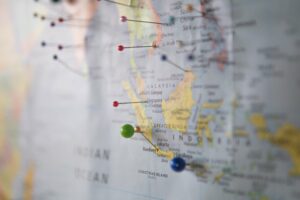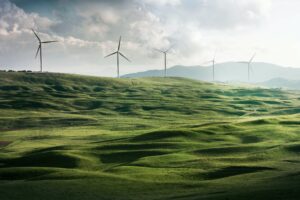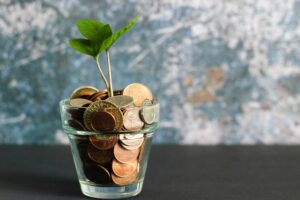Renewable Energy Transition: Grid Challenges & Solutions
The future of our planet depends on the transition to renewable energy. It’s not a matter of if, but when. With electric grid security becoming more crucial, establishing a sustainable power grid is essential.
However, there are still unanswered questions about how this transition will look and how long it will take, and what the end product may look like. But don’t worry, we’ve got you covered.
Let’s explore the challenges ahead during this transition to renewable energy and the solutions we can implement to achieve a sustainable energy future and electric grid security.
Availability
Transitioning to renewable energy presents a fundamental challenge: the availability of energy sources. Just like our rapidly depleting fossil fuels, renewable energy resources such as solar, wind, and others of the kind aren’t infinitely available. After all, solar panels aren’t useful at night and have limited capabilities when the sun doesn’t shine. Likewise, wind turbines can’t generate energy if there is low wind speed. At the same time, generators can be damaged by too much wind. And let’s not overlook the other sources of renewable energy that also face their own limitations.
The unpredictable nature of renewable energy production poses a challenge to integrating it into our grid. Without a consistent supply, the sustainability of these sources is at risk, and we can’t be certain there won’t be energy shortages.
So, what’s the solution?
Well, it lies in investing in multiple sources of renewable energy. By diversifying our sources, we can ensure a stable and sustainable energy future for the world.
Location
 In addition to renewable energy sources not always being consistent, they also are not evenly distributed across the world, which can make it challenging to transition to a sustainable energy system.
In addition to renewable energy sources not always being consistent, they also are not evenly distributed across the world, which can make it challenging to transition to a sustainable energy system.
Resources like solar, wind, or geothermal are only available in certain geographic locations or climates. Again, this has a chance to limit the usefulness of renewable energy resources. Likewise, sources of renewable energy aren’t always close to power grids or areas that need large amounts of energy, which can challenge the notion that these sources of energy are as efficient as they could be.
The solution here is to interconnect energy grids. By linking energy grids, regions with an excess of renewable energy can supply power to areas experiencing energy deficits. This can reduce the need for backup power from fossil fuels during times of energy scarcity. Another solution is to invest in distributed energy systems. This involves generating renewable energy closer to the point of use, such as installing rooftop solar panels, micro-hydro systems, or small-scale wind turbines. This approach can reduce the reliance on long-distance energy transmission and increase the efficiency of the energy system.
Storage
Given the unpredictable nature of renewable sources and the distance between energy sources and population centers, energy storage is a critical challenge that must be addressed. For instance, the sun may stop shining and prevent solar panels from producing further energy at night, but the energy demands of homes and businesses don’t simply disappear. While we may not have this issue with fossil fuels, it is important to remember the severe environmental risks associated with them. In order to ensure a sustainable future, we must shift away from our reliance on fossil fuels and focus on renewable energy sources.
Therefore, battery storage systems are necessary. These systems act like renewable energy reservoirs, allowing us to conserve and use surplus energy to power our homes and businesses during periods of low renewable energy output. Fortunately, there have been significant improvements in recent years when it comes to battery storage systems. This can help to create balance when it comes to the amount of energy generated by a renewable resource and the energy that’s circulated to meet demand.
Of course, while batteries are making this possible, price is still a key part of the equation. The price of battery storage systems needs to reach a certain level to help make renewable resources price competitive with other sources. The good news is that this is becoming less of an issue, although the more battery prices drop and the more efficient they become, the easier it’ll be to harness the full power of renewable sources of energy.
Land Use
 Renewable energy is often praised for its environmental benefits, but the amount of land some sources require can be a downside. Large solar and wind farms can produce a significant amount of energy, but they can also take up space that could otherwise be used for agriculture or other purposes. The aesthetic appeal of these installations has also been a point of contention. Unfortunately, there isn’t a straightforward solution to this issue. We need to dedicate some land to renewable energy production to create a sustainable power grid, but we also need to preserve land for food production. The only solution is to continue developing technology that generates more energy from renewable sources while taking up less land. Striking a balance between energy production and food production with regard to land allocation will be an ongoing challenge, but it’s one that we must tackle to ensure a sustainable future.
Renewable energy is often praised for its environmental benefits, but the amount of land some sources require can be a downside. Large solar and wind farms can produce a significant amount of energy, but they can also take up space that could otherwise be used for agriculture or other purposes. The aesthetic appeal of these installations has also been a point of contention. Unfortunately, there isn’t a straightforward solution to this issue. We need to dedicate some land to renewable energy production to create a sustainable power grid, but we also need to preserve land for food production. The only solution is to continue developing technology that generates more energy from renewable sources while taking up less land. Striking a balance between energy production and food production with regard to land allocation will be an ongoing challenge, but it’s one that we must tackle to ensure a sustainable future.
Cost and Investment of Renewable Electric Grid Security
 Naturally, we can’t talk about transitioning to renewable energy without mentioning the financial challenges. While renewable power is necessary for building a renewable planet, it may not be realistic unless the financial cost becomes comparable to fossil fuels and other cost-effective energy sources.
Naturally, we can’t talk about transitioning to renewable energy without mentioning the financial challenges. While renewable power is necessary for building a renewable planet, it may not be realistic unless the financial cost becomes comparable to fossil fuels and other cost-effective energy sources.
As mentioned above, battery storage systems are one cost that’s being dealt with. But that’s not all, as there are also a lot of upfront costs associated with the transition to renewable resources, which can also make it difficult to make the financial numbers add up in a way that makes renewable resources comparable or superior to fossil fuels.
Obviously, this is a huge challenge that must be resolved. With any luck, further advances in renewable energy sources will lead to more efficient use of energy and lower costs. In the meantime, there needs to be a significant investment in renewable energy from both governments and large corporations to help advance technologies further and encourage more consumers to get on board with them.
Eventually, renewable resources should become price competitive with fossil fuels. But it’s going to take time, investment, and commitment from a variety of sources, and ensuring that happens is one of the biggest ongoing challenges of the energy transition.
Electric Grid Security & Infrastructure
One of the biggest challenges faced by renewable sources of energy is also one of its biggest costs, and that’s building suitable, secure infrastructure. Building large-scale wind farms, hydroelectric plants, or solar farms can come at a high cost. Given the amount of energy they’ll be able to produce in their lifetime, they have the potential to be equally efficient as fossil fuels, if not more so. But the initial cost of developing that infrastructure is high. At the same time, the current infrastructure of the energy grid is based solely on the use of fossil fuels, requiring additional costs to make the infrastructure of the grid compatible with a variety of renewable energy resources.
Again, the solution to developing a greener grid is for governments and large corporations to make a significant investment in renewable energy technology. These types of organizations need to recognize the existential need to switch to renewable sources rather than focus on the high costs associated with developing the infrastructure required to make the transition. Without a commitment to building the infrastructure needed to transition to renewable energy sources, it will be impossible to fully transition to a sustainable grid that runs completely on renewable energy sources.
Raising Public Awareness of Electric Grid Security Issues
 Last but not least, public awareness of the need to transition to renewable sources of energy remains an ongoing challenge. Change can be difficult for people who have relied on fossil fuels for decades and grown accustomed to them. While the general public has started to learn more about renewable energy sources, there is far from a consensus that this is the only way to create the power grid of the future. Ultimately, public awareness and public pressure is the only way that governments and corporations will make the investment needed to fully transform the power grid into one that operates on renewable resources.
Last but not least, public awareness of the need to transition to renewable sources of energy remains an ongoing challenge. Change can be difficult for people who have relied on fossil fuels for decades and grown accustomed to them. While the general public has started to learn more about renewable energy sources, there is far from a consensus that this is the only way to create the power grid of the future. Ultimately, public awareness and public pressure is the only way that governments and corporations will make the investment needed to fully transform the power grid into one that operates on renewable resources.
The only solution is for the public to increase its awareness of all that renewable energy sources can do and their critical role in transforming the power grid. As mentioned, the bottom line financially is what’s going to drive things. When a majority of the general public is demanding an end to the use of fossil fuels and wants to move toward renewable energy, we will finally be able to fully transition to renewable sources, create a sustainable energy grid, and secure human continuity.
Create Impact with us:
Join our membership and
contribution programs
Participate in our
upcoming events:
Schedule a call with
our experts:
Cyber Resilience in the Energy Sector: Safeguarding the Grid from Digital Disruptions
In today’s interconnected world, the energy sector stands as a vital backbone of national and global infrastructures, facilitating everything from lighting our homes to powering industries. However, this sector is increasingly finding itself in the crosshairs of cybercriminals, making cyber resilience not just a matter of technological integrity but of national security. The concept of […]
The Role of Local Governments in Strengthening Infrastructure Resilience
The significance of local governments in strengthening infrastructure resilience cannot be understated. Often perceived as entities primarily focused on addressing routine community concerns and improvements, their responsibilities extend far beyond these day-to-day operations. In the realm of preparing for and mitigating the effects of large-scale, catastrophic events—referred to as “black sky” disasters—local governments emerge as […]
Navigating Complex Interdependencies and Building Resilience in the E-Sector
In today’s interconnected world, the electric sector is more than just a utility provider; it’s a cornerstone of modern life. Its influence extends beyond mere power supply, touching virtually every aspect of our daily activities, from powering homes and businesses to fueling transportation and technology. This pivotal role, however, is not without its complexities. The […]
